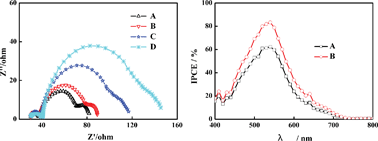Mg(OOCCH3)2 as an electrolyte additive for quasi-solid dye-sensitized solar cells: with the purpose of enhancing both the photovoltage and photocurrent by modifying the TiO2/dye/electrolyte interfaces
Abstract
The interface modification effect within quasi-solid


 Please wait while we load your content...
Please wait while we load your content...